Table of Contents
ToggleIn a world where shopping carts are more digital than ever, optimizing smart shopping campaigns can feel like trying to find a needle in a haystack—blindfolded. But fear not! With the right strategies, those campaigns can transform from a chaotic online bazaar into a streamlined shopping experience that even your grandma would approve of.
Understanding Smart Shopping Campaigns
Smart shopping campaigns streamline advertising across various Google platforms. These campaigns automatically manage bidding, targeting, and ad placement to maximize conversion rates.
What Are Smart Shopping Campaigns?
Smart shopping campaigns integrate product listings with automated bidding strategies. They utilize machine learning to analyze performance data and enhance ad decisions. Advertisers input product catalogs and set budgets, and the campaigns optimize ad visibility across Google Search, Display, and YouTube. This approach simplifies the process, especially for e-commerce businesses looking to reach relevant customers while saving time on manual adjustments.
Advantages of Smart Shopping Campaigns
Smart shopping campaigns offer several key advantages. Enhanced automation reduces the need for ongoing management. They optimize performance by leveraging data insights, resulting in increased return on investment. Visibility across multiple platforms widens audience reach, ensuring ads appear in front of potential buyers at various touchpoints. Furthermore, advertisers can benefit from simplified setups, allowing for quick launches and adjustments based on real-time performance data.
Key Factors in Campaign Optimization

Optimizing smart shopping campaigns involves several key factors that enhance performance and drive success. Advertisers can significantly improve effectiveness by focusing on specific goals and targeting the right audience.
Defining Your Goals
Establishing clear objectives forms the foundation of any successful campaign. Advertisers often aim to increase conversions, boost online sales, or enhance brand visibility. Setting these goals helps track performance and measure success effectively. Consider whether you want to maximize returns on ad spend or ensure a balanced cost per acquisition. Staying focused on these goals leads to more structured campaign decisions that align with overall business strategy.
Identifying the Right Audience
Targeting the right audience is crucial for maximizing campaign impact. Identify customer demographics based on existing data, purchasing behavior, and interests. Analyzing previous customer interactions provides insights into what resonates with them. Use the information gained to create tailored ads that speak directly to these potential customers. Engaging with different segments increases the likelihood of attracting qualified leads, ultimately enhancing overall campaign performance.
Strategies for Effective Optimization
Effective optimization enhances the impact of smart shopping campaigns. Advertisers can implement several strategies to maximize their success.
Utilizing Automated Bidding Strategies
Automated bidding strategies respond dynamically to changes in market conditions. Advertisers should select bidding options like Target CPA or Target ROAS to fit their unique campaign objectives. These strategies leverage machine learning to analyze conversion data in real-time. In doing so, they adjust bids automatically, leading to better ad placements. Tracking performance metrics regularly ensures the chosen strategy aligns with overall goals. Advertisers gain insights into optimal bidding adjustments, maximizing conversion potential.
Enhancing Product Feed Quality
Product feed quality directly influences campaign effectiveness. High-quality product images and detailed descriptions attract user attention. Regular updates to inventory and pricing information prevent inaccuracies that could deter potential customers. Incorporating relevant keywords in product titles and descriptions boosts visibility in search results. Well-structured product feeds allow Google to match ads more effectively to relevant queries. Maintaining an organized feed ensures an optimal shopping experience, leading to higher engagement rates. Monitoring feed performance continuously helps identify areas for improvement, ensuring campaigns stay competitive.
Analyzing Campaign Performance
Analyzing campaign performance reveals insights crucial for optimization. Effective strategies rely on understanding key metrics and utilizing the right tools.
Important Metrics to Track
Tracking important metrics provides clarity on campaign effectiveness. Conversion rate measures the percentage of users completing desired actions. Click-through rate indicates ad engagement levels, while return on ad spend evaluates revenue generated for each dollar spent. Impression share reflects ad visibility against total potential audiences. Regular analysis of these metrics allows advertisers to identify successful areas and adjust less effective components, ensuring campaigns receive the necessary focus and resources for improvement.
Tools for Monitoring Success
Using tools for monitoring success streamlines performance analysis. Google Ads offers built-in reporting features for tracking metrics directly within campaigns. Google Analytics provides deeper insights into user behavior, enabling detailed tracking of traffic sources and conversions. Third-party tools, such as SEMrush or Optmyzr, assist in managing strategies and generating reports for comprehensive performance evaluations. Leveraging these tools enhances campaign visibility, facilitates informed decision-making, and promotes ongoing optimization efforts.
Optimizing smart shopping campaigns is essential for advertisers looking to thrive in a competitive digital landscape. By leveraging automation and machine learning, these campaigns offer a streamlined approach to managing ads across multiple platforms.
Focusing on clear goals and understanding the target audience can significantly enhance campaign performance. Regularly updating product feeds and monitoring key metrics ensures campaigns remain effective and competitive.
With the right strategies in place, advertisers can maximize their return on investment and drive meaningful engagement with potential customers. Embracing these optimization techniques will ultimately lead to more successful and impactful smart shopping campaigns.



